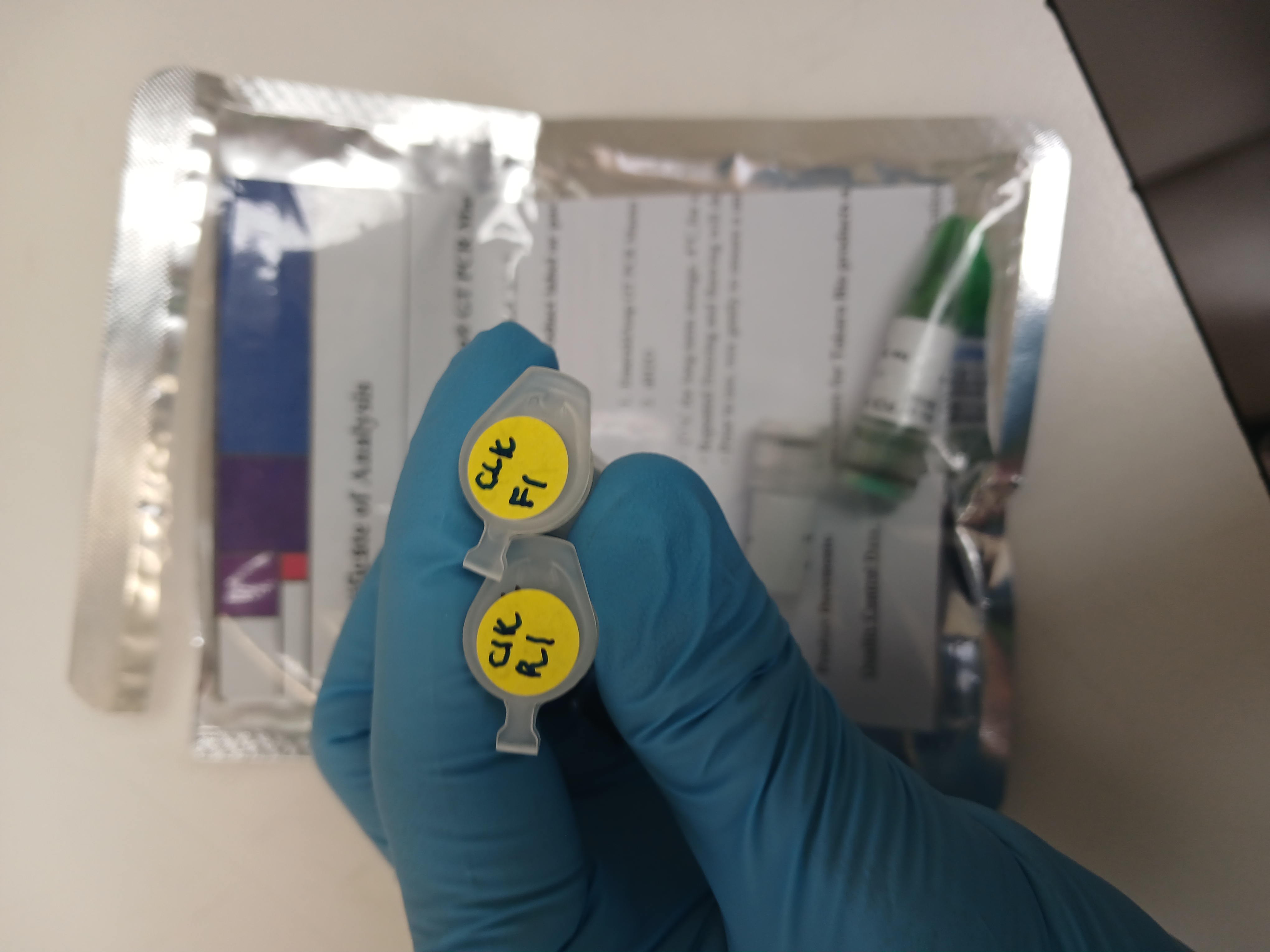PCR Amplification of Clock and Adcyap1 genes with EmeraldAmp® GT PCR Master Mix in Avian species for polymorphism elucidation
Louis-Stéphane Le Clercq, Desiré Lee Dalton, Antoinette Kotzé, Paul Grobler
Abstract
This PCR protocol is used to amplify Clock and Adcyap1 gene regions in avian species which have previously shown polymorphisms, such as poly-Q runs, that correlated to migration phenology. It was tested and optimized in Woodlands kingfisher (Halcyon senegalensis) and Diederik cuckoos (Chrysococcyx caprius). The primers were designed based on those previously used by Johnson et al. (2007) and Steinmeyer et al. (2009) by comparing the relevant gene sequences for chickens (Galus galus) with several other available avian species to select primers that would account for the most common variations in primer regions, enabling more universal amplification. Individual clock gene sequences were retrieved from Genbank and aligned in BioEdit 7.2. Primers were then selected based on the annotated regions. The assay was designed using 25 μL (half) reactions of EmeraldAmp® GT PCR Master Mix, which is premixed with loading buffer for easy gel loading following PCR and does not require a long initial denaturation step (thereby shortening the run time). Gel electrophoresis was able to confirm successful amplification of a product ±280 bp long in both species. The same primers were subsequently used for sanger sequencing. A BLAST search of the resulting sequences confirmed the identity of the amplified regions.
Before start
Thaw reagents On ice .* Wipe workspace with 10% volume Bleach, followed by 70% volume Ethanol, and ddH2O before (and after).
- UV the relevant laminar flow cabinets.
Attachments
Steps
Master Mix set-up
Prepare Master Mix and Samples* for PCR.
*Sample information has been deposited to BioSample and associated to the BioProject (PRJNA737185) which used this protocol.
(An experiment template is included in excel format.)
Set up the following Master Mix with 25µL reaction in a DNA-free lab and laminar flow cabinet.
| A | B | C | D |
|---|---|---|---|
| EmeraldAmp® GT PCR Master Mix | X2 | X1 | 12.5 |
| Forward primer | 10 µM | 0.2 µM | 0.5 |
| Reverse primer | 10 µM | 0.2 µM | 0.5 |
| Nuclease free water | - | - | 9.5 |
Summary of components to add to Master Mix with the original and final concentrations as well as the relative volume in μL


Thermal cycling
Program and run the following thermal cycling profile on a thermal cycler, e.g.
Equipment
| Value | Label |
|---|---|
| SimpliAmp Thermal Cycler | NAME |
| PCR | TYPE |
| Applied Biosystems | BRAND |
| A24811 | SKU |
| Any standard PCR thermocycler will suffice | SPECIFICATIONS |
40Cyclesof:
- Denaturation at
98°Cfor0h 0m 10s - Annealing at
60°Cfor0h 0m 30s - Elongation at
72°Cfor0h 1m 0s
- Infinite hold at
4°Cuntil ready for next steps.

Electrophoresis
Confirm success of amplification by TAE/TBE electrophoresis.
Prepare a 2% (v/v) gel with
Resolution capacity of different concentrations of gels .
| A | B |
|---|---|
| 0.3 | 5 to 60 kbp |
| 0.6 | 1 to 20 kbp |
| 0.7 | 0.8 to 10 kbp |
| 0.9 | 0.5 to 7 kbp |
| 1.2 | 0.4 to 6 kbp |
| 1.5 | 0.2 to 3 kbp |
| 2.0 | 0.1 to 2 kbp |
Concentration (%) of agarose gels and their efficient range of separation in kilo base pairs.
Amount of agarose required for a small (50 mL) and large (100 mL) gel.
| A | B | C |
|---|---|---|
| 0.3 | 150mg | 300mg |
| 0.6 | 300mg | 600mg |
| 0.7 | 350mg | 700mg |
| 0.9 | 450mg | 900mg |
| 1.2 | 600mg | 1.2g |
| 1.5 | 750mg | 1.5g |
| 2.0 | 1g | 2g |
Concentration (%) of gels and their required amount of agarose.
*Note:1µL per 10mL

Load 4µLof PCR product to the gel alongside a molecular weight marker, e.g. 60Volt for 0h 30m 0s . Possible settings for the
Equipment
| Value | Label |
|---|---|
| PowerPac Basic Power Supply | NAME |
| Power Supply | TYPE |
| Bio-Rad Scientific | BRAND |
| 1645050 | SKU |
are:
| A | B |
|---|---|
| < 1kbp | 5 V/cm |
| 1-12 kbp | 4-10 V/cm |
| >12 kbp | 1-2 V/cm |
Ideal voltages for resolving different size fragments.
Visualize and capture gel on an appropriate imager and paired software, e.g.
Equipment
| Value | Label |
|---|---|
| Gel Doc XR+ Gel Documentation System | NAME |
| Gel Documentation System | TYPE |
| Bio-rad Laboratories | BRAND |
| 1708195 | SKU |
Amplicon purification
Purify the positive amplicons with
Mix 5µL with 2µL for a total volume of 7µL .
Incubate at 37°C for 0h 15m 0s to degrade PCR primers and short products.
The PCR product is now ready for use in DNA sequencing*, SNP analyses, or other primer-extension applications.
*See Clock genes sequencing protocol (https://protocols.io/view/abi-sanger-sequencing-of-avian-clock-genes-to-eluc-bvydn7s6)




